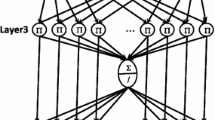Abstract
This paper proposes an unscented Kalman filter (UKF) based coordinative, simultaneous localization and mapping (CSLAM) system, in which robots share common mapping information. The SLAM information obtained by a master robot is shared with slave robots, which estimate only their own localizations using comparatively simple sensors. The behavior of the slave robots depends on the reconstructed CSLAM using information transmitted by the master robot. The proposed process reduces the processing burden of the slave robots, which results in a reduction of the calculation time and the complexity of their hardware system. By comparing the proposed algorithm with some conventional methods in terms of system stability, the efficiency of the proposed method is verified.
Similar content being viewed by others
References
J. Liu and J. Wu, Multi-Agent Robotic Systems, CRC Press, Wasington, D.C., 2001.
J. Peng and S. Akella, “Coordinating multiple robots with Kinodynamic constraints along specified paths,” The International Journal of Robotics Research, vol. 24, no. 4, pp. 295–310, April 2005.
I. Rekleits, Coordinative Localization and Multirobot Exploration, Ph.D. Thesis, McGill University, pp. 1–10, 2003.
Y. Yongjie and Z. Yan, “Collision avoidance planning in multi-robot based on improved artificial potential field and rules,” Proc. of the IEEE International Conf. on Robotics and Biomimetics, pp. 1026–1031, 2008.
S. Cambon, R. Alami, and F. Gravot, “A hybrid approach to intricate motion, manipulation and task planning,” The International Journal of Robotics Research, vol. 28, no. 1, pp. 104–126, January 2009.
W. S. Moon, B. S. Cho, J. W. Jang, and K. R. Baek, “A multi-robot positioning system using a multicode ultrasonic sensor network and a Kalman filter,” International Journal of Control, Automation, and Systems, vol. 8, no. 6, pp. 1349–1355, 2010.
R. Simmons, D. Apfelbaum, W. Burgard, D. Fox, M. Moors, S. Thrun, and H. Younes, “Coordination for multi-robot exploration and mapping,” Proc. of the AAAI National Conf. on Artificial Intelligence, pp. 852–858, 2000.
A. Howard, “Multi-robot simultaneous Localization and mapping using particle filters,” The International Journal of Robotics Research, vol. 25, no. 12, pp. 1243–1256, December 2006.
S. J. Julier, J. K. Uhlmann, and H. F. Durrant-Whyte “A new approach for filtering nonlinear system,” Proc. of the American Control Conf., pp. 1628–1632, 1995.
J. Andrade-Cetto, T. Vidal-Calleja, and A. Sanfeliu, “Unscented transformation of vehicle states in SLAM,” Proc. of the IEEE International Conf. Robotics and Automation, pp. 323–328, 2005.
S. I. Roumeliotis and G. A. Bekey, “Distributed multi-robot Localization,” IEEE Trans. on Robotics and Automation, vol. 18, no. 5, pp. 781–795, October 2002.
Y. Hao, Z. Xiong, F. Sun, and X. Wang, “Comparison of unscented Kalman filters,” Proc. of the IEEE International Conf. on Mechatronics and Automation, pp. 895–899, 2007.
D. J. Jwo and C. N. Lai, “Unscented Kalman filter with nonlinear dynamic process modeling for GPS navigation,” GPS Solution, vol. 12, pp. 249–260, 2008.
K. S. Choi, B. K. Song, and S. G. Lee, “Hybrid filter based simultaneous Localization and mapping for a mobile robot,” Proc. of ISNN, Part III, LNCS 5553, pp. 257–266, May 2009.
S. Thrun, “Robotic mapping: a survey,” Exploring Artificial Intelligence in the New Millenium, G. Lakemeyer and B. Nebel, Eds., Morgan Kaufmann, 2002.
K. Kim and C. G. Park, “Non-symmetric unscented transformation with application to in-flight alignment,” International Journal of Control, Automation, and Systems, vol. 8, no. 4, pp. 776–781, 2010.
R. Van der Merwe, Sigma-point Kalman Filters for Probability Inference in Dynamic State-space Models, Ph.D. Thesis, Oregon Health and Science University, 2004.
R. Kandepu, B. Foss, and L. Imsland, “Applying the unscented Kalman filter for nonlinear state estimation,” Journal of Process Control, vol. 18, pp. 753–768, November 2004.
T. Bailey, https://svn.openslam.org/data/svn/baileyslam.
Author information
Authors and Affiliations
Corresponding author
Additional information
Recommended by Editorial Board member Sooyeong Yi under the direction of Editor-in-Chief Jae-Bok Song.
This work was partially supported by the Korea Research Foundation (KRF) grant funded by the Korea government (MEST)(No. 2009-0074464) and the Ministry of Education, Science Technology (MEST) and National Research Foundation of Korea (NRF) through the Human Resource Training Project for Regional Innovation (I100101).
Kyung-Sik Choi received his B.S. degree in Electronics, an M.S. degree in Education of Electronic Electrical Communication, and a Ph.D. degree in Electrical Engineering from Yeungnam University in 2001, 2008, and 2011, respectively. Since 2003, he has been with Ulsan Meister High School. His research interests include robotics, multiple robots, neural networks and SLAM.
Suk-Gyu Lee received his B.S. and M.S. degrees in Electrical Engineering from Seoul National University in 1979, and 1981 respectively, and his Ph.D. degree in Electrical Engineering from UCLA in 1990. Since 1982, he has been with Yeungnam University, Korea where he is currently a Professor in the Department of Electrical Engineering. His research interests include robotics, SLAM, nonlinear control and adaptive control.
Rights and permissions
About this article
Cite this article
Choi, KS., Lee, SG. An enhanced CSLAM for multi-robot based on unscented kalman filter. Int. J. Control Autom. Syst. 10, 102–108 (2012). https://doi.org/10.1007/s12555-012-0111-4
Received:
Revised:
Accepted:
Published:
Issue Date:
DOI: https://doi.org/10.1007/s12555-012-0111-4



